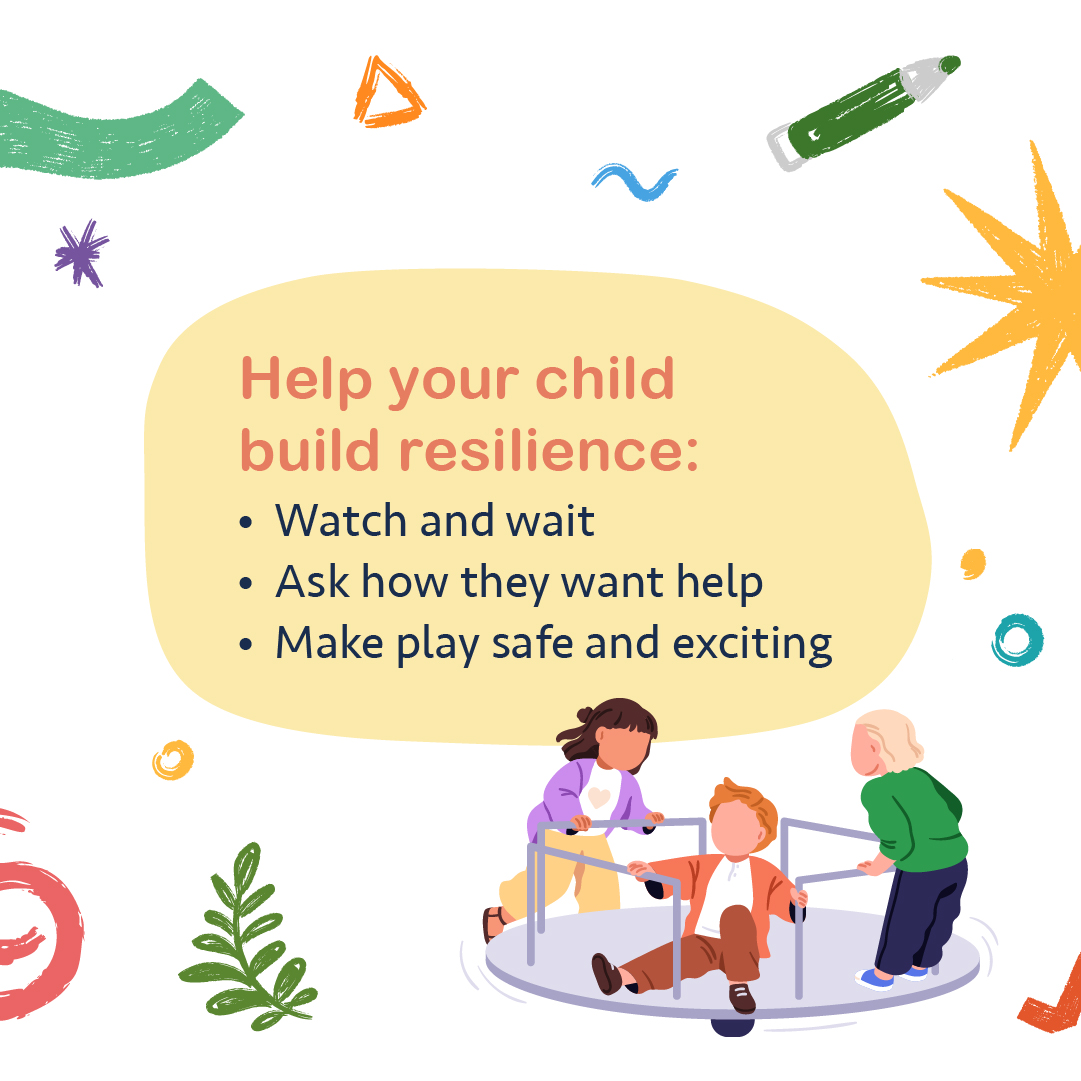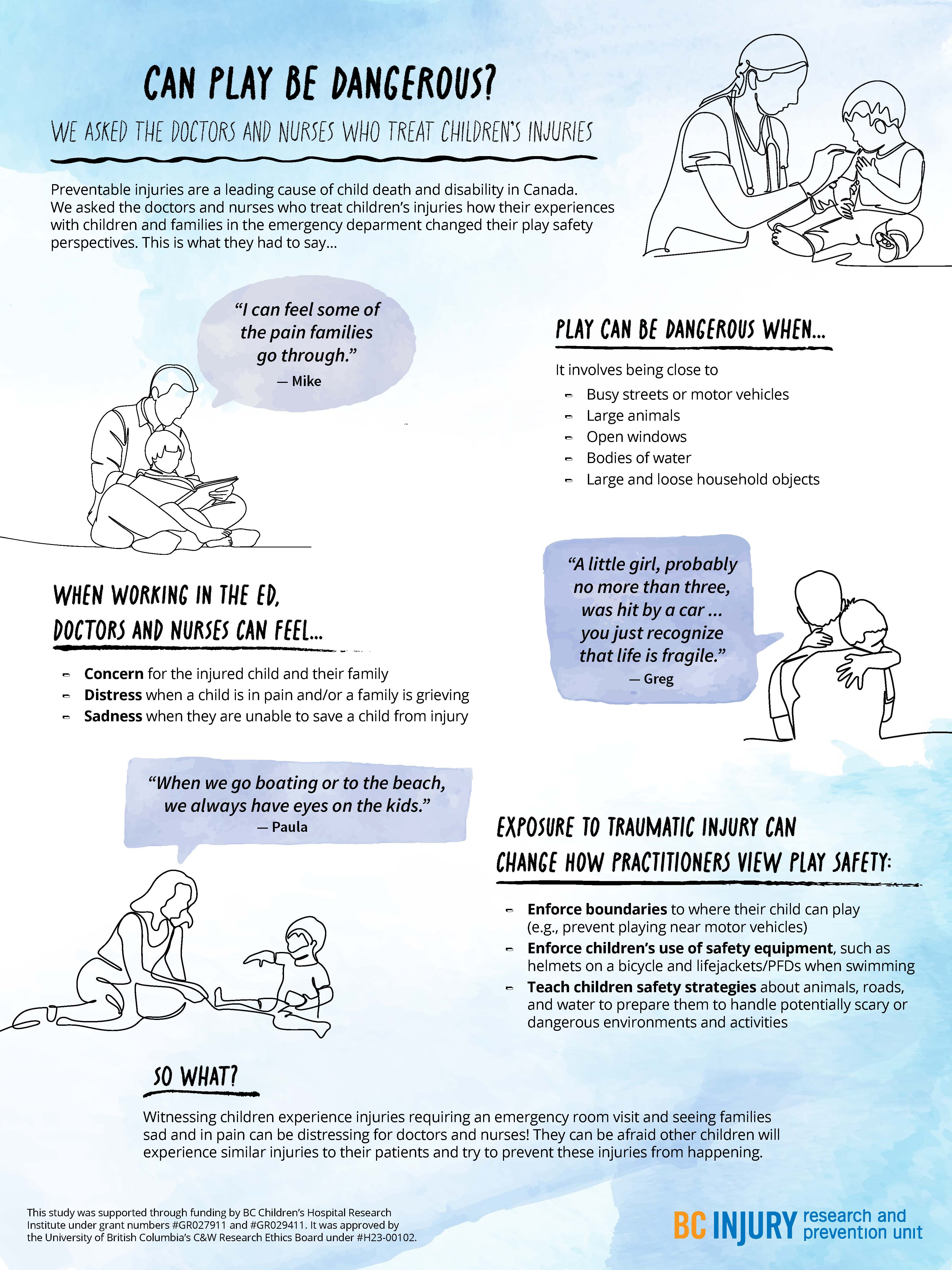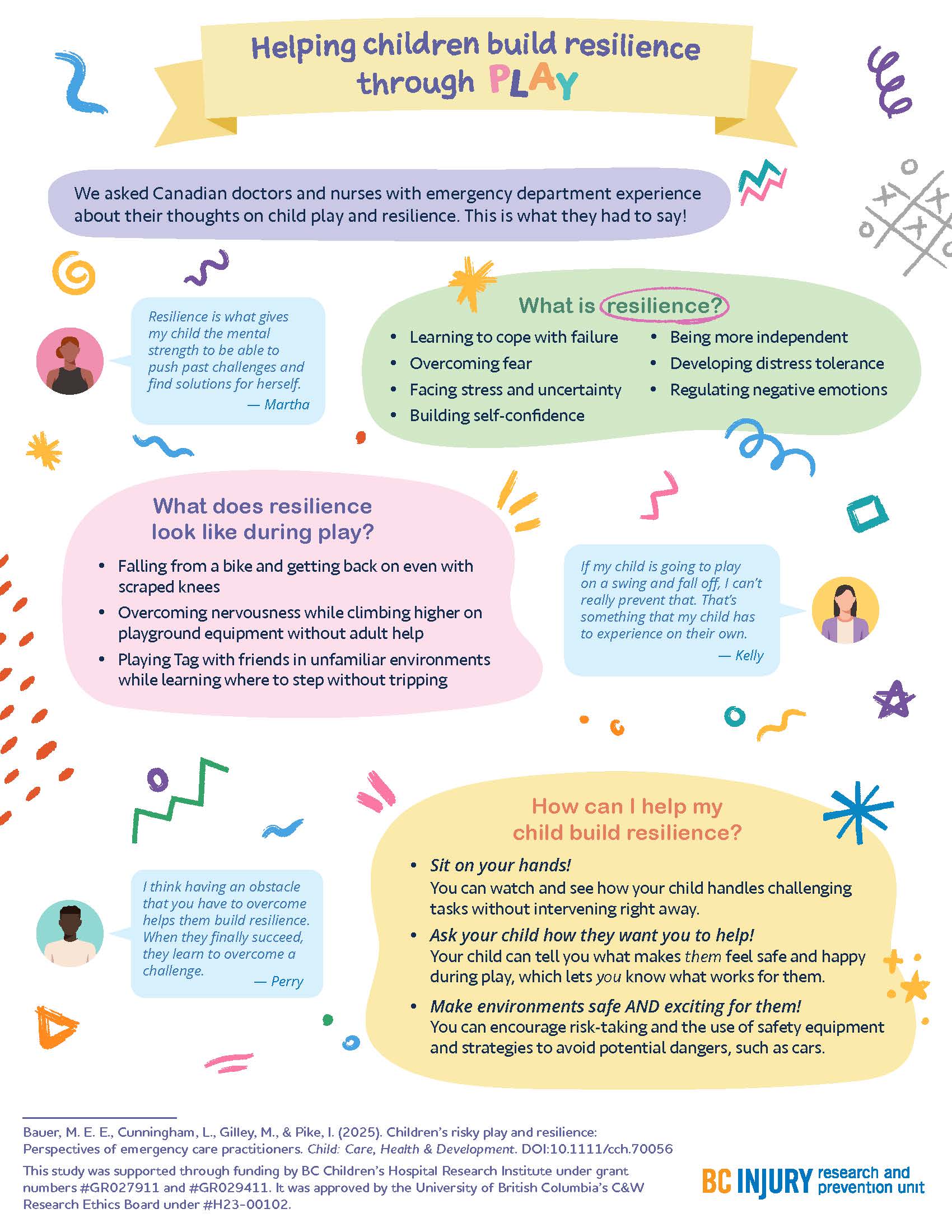Cheers to 25 Years!

The BCIRPU turned 25 in 2023/2024. We celebrated our silver anniversary with a full-day symposium on October 11, 2023.
We've created a timeline of the BCIRPU's origins, notable research projects, and influential points in time throughout the history of injury prevention in BC. Click on each link to view the timeline in PDF format, broken down into five segments.
1996–2004
2005–2009
2010–2014
2015–2019
2020–2024
Highlights of the BCIRPU since its inception:
- Since opening its doors in 1998, the BCIRPU has published more than 240 peer-reviewed journal articles, and over 220 reports.
- The BCIRPU's first systematic review was published in 2001: Sports and Recreation Injury Prevention Strategies: Systematic Review and Best Practices (PDF).
- The Emergency Department Injury Surveillance System (EDISS) project (2000-2003) was a large-scale project, collecting data from emergency departments at ten hospitals.
- The first iteration of the widely-used seniors fall prevention resource, Strategies and Actions for Independent Living© (SAIL), debuted in 2003.
- 2006 marked the formation of a strategic partnership with The Community Against Preventable Injuries (Preventable) social marketing campaign, a relationship that continues today.
- BCIRPU completed evidence reviews and syntheses to support the bill that led to the updating of the BC Motor Vehicle Act in 2008 to improve child restraint safety in vehicles.
- The Injury Data Online Tool© (iDOT) launched in 2008.
- 2006–2010: BCIRPU researchers developed 34 national injury indicators for children and youth, and 27 for First Nations and Inuit children and youth.
- The Concussion Awareness Training Tool (CATT) for Medical Professionals was created in 2013. The tool expanded in subsequent years to 8 modules. cattonline.com receives over 100,000 visits a year.
- The foundations of Dr. Mariana Brussoni's work on outdoor risky play are laid after the publication of a 2012 manuscript and a sold-out workshop on risky play at the 2013 Canadian Injury Prevention and Safety Promotion Conference in Montreal, QC.
- 2010–2015: BCIRPU researchers and their Canadian colleagues received a five-year Team Grant in Child and Youth Injury Prevention from CIHR. The CIHR Team published over 140 peer-reviewed manuscripts, made 185 invited presentations, co-developed a graduate level workshop course in injury research methodology, leveraged additional research grants totalling more than $8 million, and recruited/trained over 60 trainees (supported by a trainee network).
- In 2017, three provincial priorities for injury prevention were established: transport-related injuries; community-dwelling seniors' falls and fall-related injury; and youth suicide and self-harm.
- A 2018 study demonstrated that the Period of PURPLE Crying© program, delivered by Prevent Shaken Baby Syndrome BC, is associated with a 35% reduction in the number of children under two admitted to BC hospitals with shaking-related injuries.
- In 2018, UBC Vancouver was named a study site for the national study, Surveillance in High School to Reduce Concussions and Consequences of Concussions in Canadian Youth: SHRed Concussions (Funder: National Football League). BCIRPU researchers coordinated operations of the Vancouver study site.
- In 2022, 5 new injury prevention lead positions in the regional health authorities were created. These individuals are BCCDC employees and members of the BCIRPU.
- In 2022, BCIRPU, Parachute, and BC Centre for Disease Control hosted the 2022 Canadian Injury Prevention Conference in Vancouver, BC. This was the first national injury prevention conference in Canada in over ten years.
- In 2023, BCIRPU researchers received $1.6 million in funding to deliver FireSafe, a smoke alarm safety campaign to reduce fire-related injury and death in BC, in partnership with Preventable and the Office of the Fire Commissioner.
- distress when a child was in pain and when a family was grieving; and
- sadness in the event they were not able to save a child in their care.
- concern for the injured child and the child’s family;
Particularly traumatic events, such as those involving vivid sights and sounds (e.g., families holding each other and having extreme reactions), stuck with the practitioners, having long-lasting impressions on them and causing them to re-live these events in the years following their exposure.
Even after their shift was over, practitioners said that they changed how they approached parenting and how they perceived safety during play as a result of witnessing these traumatic events. They reported having more knowledge of the causes and consequences of severe injuries, such as those that require hospitalization or emergency care. For example, practitioners were more likely to enforce boundaries around where their children could play, such as by forbidding their child to play near busy streets. They also were more likely to tell their child about safe play environments and equipment, and put this equipment on their child before play, such as explaining the benefits of using helmets while riding bikes.
Practitioners were more likely to enforce boundaries around where their children could play, and use safety equipment, such as bike helmets.
Practitioners also described being concerned about their children’s play near open windows, around large bodies of water unsupervised, and in environments where firearms were present. They also expressed worry about their children’s play on trampolines and on motorized vehicles, such as ATVs. Findings related to trampoline play safety concerns were published in the journal Injury Prevention.
Observing family grief due to child injury or death affected the mental well-being of health care practitioners, drawing attention to the need for mental health supports for those involved in caring for severely injured and dying patients.


"Raise more resilient children through play...watch and see how your child handles challenging tasks without intervening right away." —Dr. Michelle Bauer
Building resilience through play
How can parents help their children build resilience? By letting them play!
The experiences that practitioners witnessed encouraged them to support their children in building resilience through play; specifically, by supporting children in learning to cope with failure, overcome fear, build self-confidence, develop distress tolerance, and regulate negative emotions. Findings related to building resilience through play were published in the journal Child: Care, Health, and Development.

Parents fostered resilience in their kids by:
- helping their kids get back on bikes after they fell off and wanted to try again;
- sitting on their hands so they did not instinctively reach for their children when their children fell down; and
- encouraging participation in challenging and thrilling activities in forests and water while safety equipment was used.
"There are a few ways that parents can raise more resilient children through play that are supported by literature and our study findings," said Dr. Bauer. "One: watch and see how your child handles challenging tasks without intervening right away."
"Two: Ask your child how they want you to help—let them tell you what makes them feel safe and happy during play. Let them lead. And three: make play both safe and exciting by encouraging risk-taking, teaching them how to avoid hazards, and using safety equipment.”
This research was supported through Drs. Bauer’s and Gilley’s receipt of a clinical and translational research seed grant from the BC Children’s Hospital Research Institute (BCCHR), Dr. Bauer’s BCCHR postdoctoral fellowship award, and additional training provided to Dr. Bauer through her participation in the Programs and Institutions Looking to Launch Academic Researchers (PILLAR) program through ENRICH, a national organization training perinatal and child health researchers.
Learn more about the study through two infographic posters:
Graphics and posters by Milica Radosavljevic











